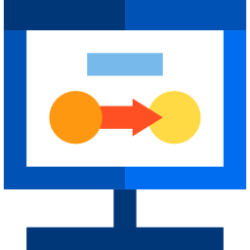An Advertising Technique to Make People Persuade Themselves and Get Higher Conversion

Why?
It’s better if they articulate the reasons for themselves.
How?
Have an ad that says something like this: “On a scale of 1 to 10, one meaning not at all, ten meaning right now, how ready are you to get help doubling your income?” They click on the scale in the ad. That takes them to a landing page with only another question showing: “Ok, you picked 3. Why didn’t you choose a lower number?” (dynamically exchange the number for their chosen one.) Have a field where they can write their answer.
After they submit their answer, you reveal the sales letter portion of the landing page. At this stage they already articulated to themselves why are they are at least a little bit interested in what you want to offer.
If they picked 1, the question should be: “Ok, you chose 1. What can we do to make you a 2?” You then just collect the answers, (and if you can also their email address), and analyze them to see what more you can do.
A Book About the Best Psychological Influencing Techniques With Extensive Application Scenarios

Why?
There are quite a few psychological techniques that can be used to influence others. There are however two problems:
1. There are many such techniques.
2. Sometimes it’s hard to imagine their application to your particular situation, especially when combining more than one such technique.
How?
A book, where each chapter focuses on one technique, explains it, and then shows many specific applications in many fields, either by itself or combined with one or more of the other techniques. On online community could also be created for further discussions.
Get the Visitors to Do Your Selling for You

Why?
Convincing a visitor that you are the right choice for them is always hard for the first sale.
How?
Start the sales letter explaining to them that usually what they would be reading now is all the reasons why they should buy. This, however, is different. You want to play a game with them.
You will give them a headline that encompasses all you would say in one long sentence, and put in it all the benefits, features, etc. that are important for you to convey.
You then list for them all the standard points you were going to make a list of short, concise titles. Things like benefits, features, objections, etc. They now have to click on each of these titles one after the other. When they click a title, they will get a pop up with a list relevant to that title (features for a beauty product: not animal tests, shining skin, takes only one minute to apply, etc.) mixing in also such features that are not related. The game is for them to click on the right features only. They do this for all titles.
This way they – and not you – are expressing all the important points you want to make.
You then give them a score, show them the points they missed, and can even give them a reward (maybe a sliding discount dependent on how few they missed – they might even reload the page to get a better score the second time which will only enforce all the point again in their mind), or ask them for their email to send them their scores
An Easy Method to Grow Your Opt in Conversion Rate Using a Micro Commitment Technique

Why?
If it’s easy, doesn’t cost more and results in higher conversion rate, wouldn’t you like it?
How?
Use the principle that a small previous act of (public) commitment will lead to a higher action rate when you ask for it later.
When a visitor lands on your page, show him a pop-up window and ask him to click on one of two buttons. Something with a text like: “Do You think that the right information is critical to your success?”, and two buttons “Yes,” and “No” to click. The majority of people would click on the yes button (especially if they are the right audience). The window disappears – it took about five seconds – and they go on consuming the page.
They now acted by clicking and committing to a particular point of view. It’s their “truth” now. The fact that it’s on a public web page (even though nobody else sees it) makes it a kind of public commitment (and they can also assume you know what they “said.”)
At some point (timed, exit intent, etc.) they will see another popup window with your desired call to action phrased in a way that is congruent with their “yes” action before. Something like: “If you need even more of the relevant up to date information on what you just read, to make sure you succeed, enter your email address and we’ll send it to you immediately.”
This will probably convert much better than doing the same without the first commitment action you asked them.
Get Your Store Visitor to Approach You

Why?
It’s hard, awkward and many times doesn’t result in a positive outcome, when you approach a visitor to your store and ask if they need help.
How?
When a visitor comes in, position yourself within his eyesight but too further away to have any comfortable verbal exchange. After a short while, while observing him try and catch their eyes and just – in a “by the way,” familiar and welcoming style – smile and wave at them as if welcoming back an acquaintance, then continue immediately doing what you were and not looking at them. It is very different than anything they usually experience in a store. It breaks the script they have in their mind of how things happen in a store, and if done correctly, will result in many more visitors coming to you and asking for help.
